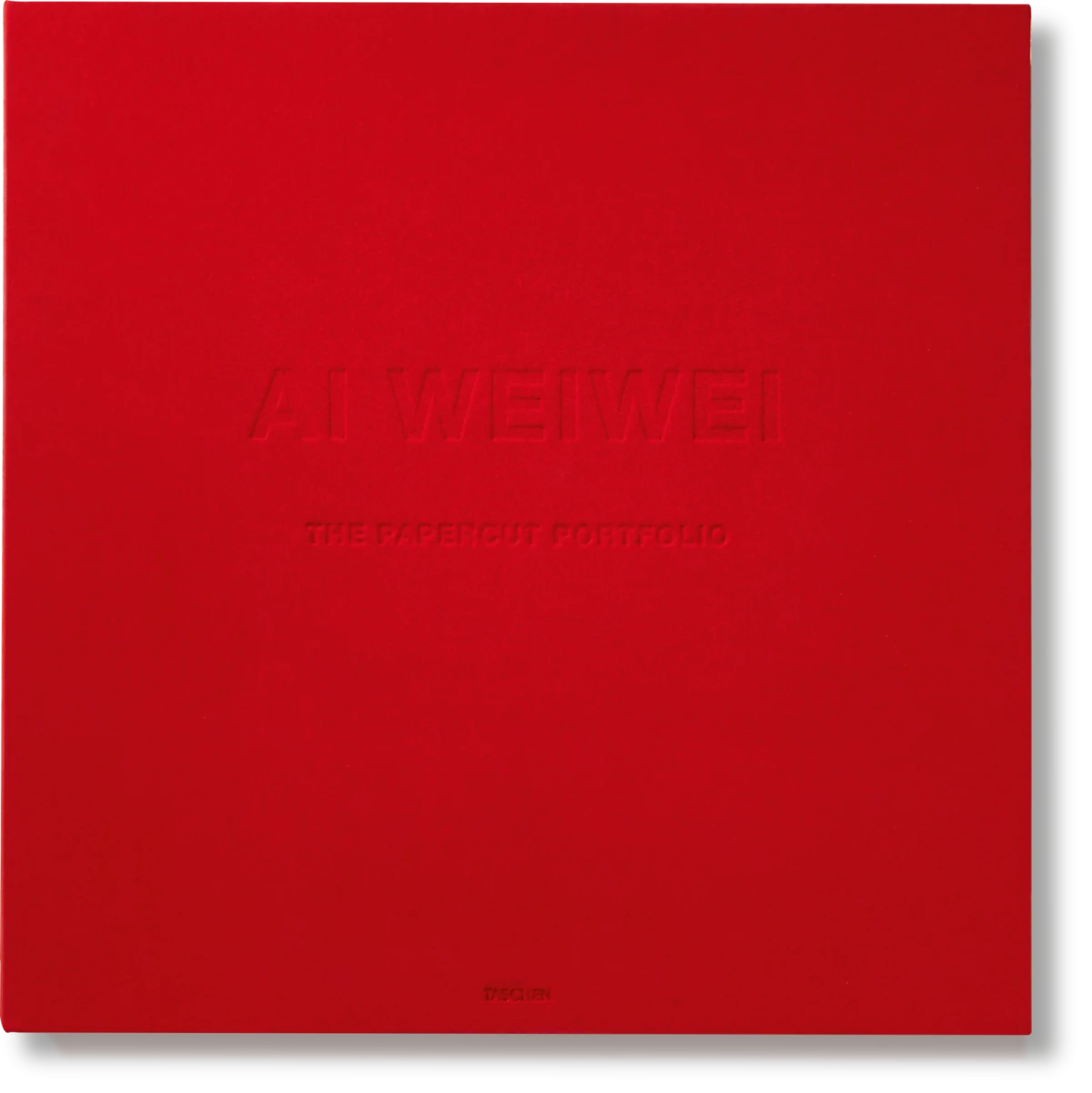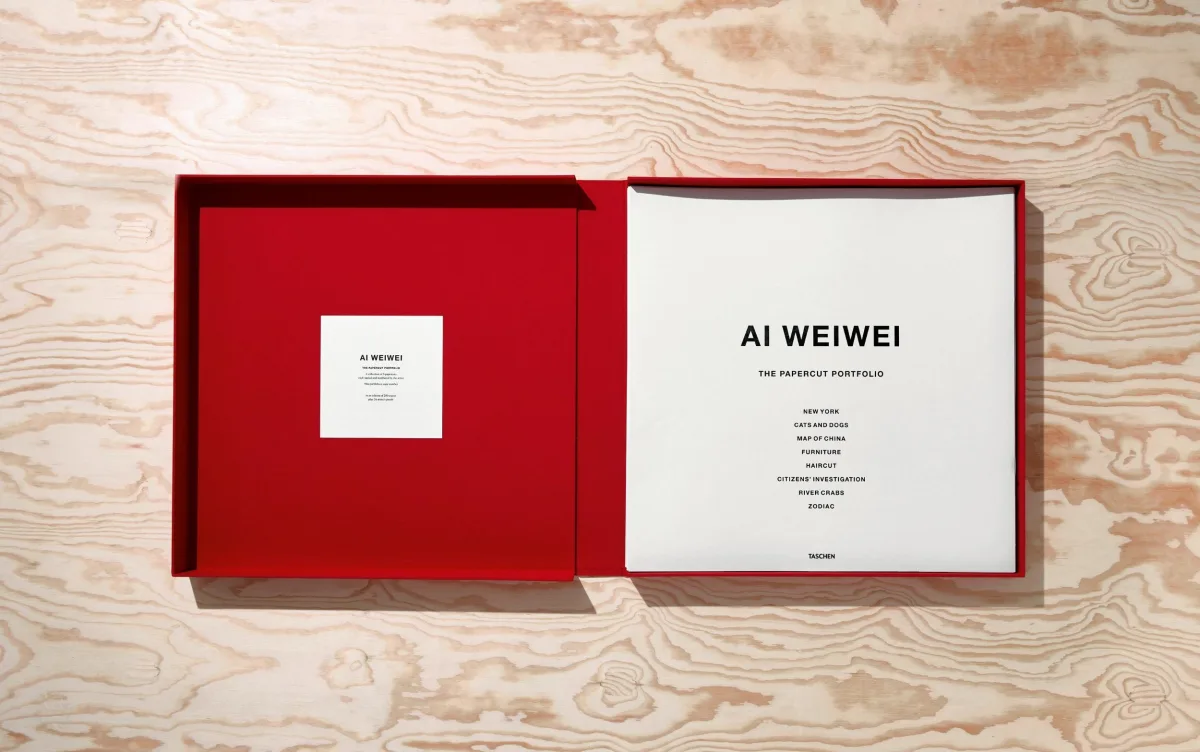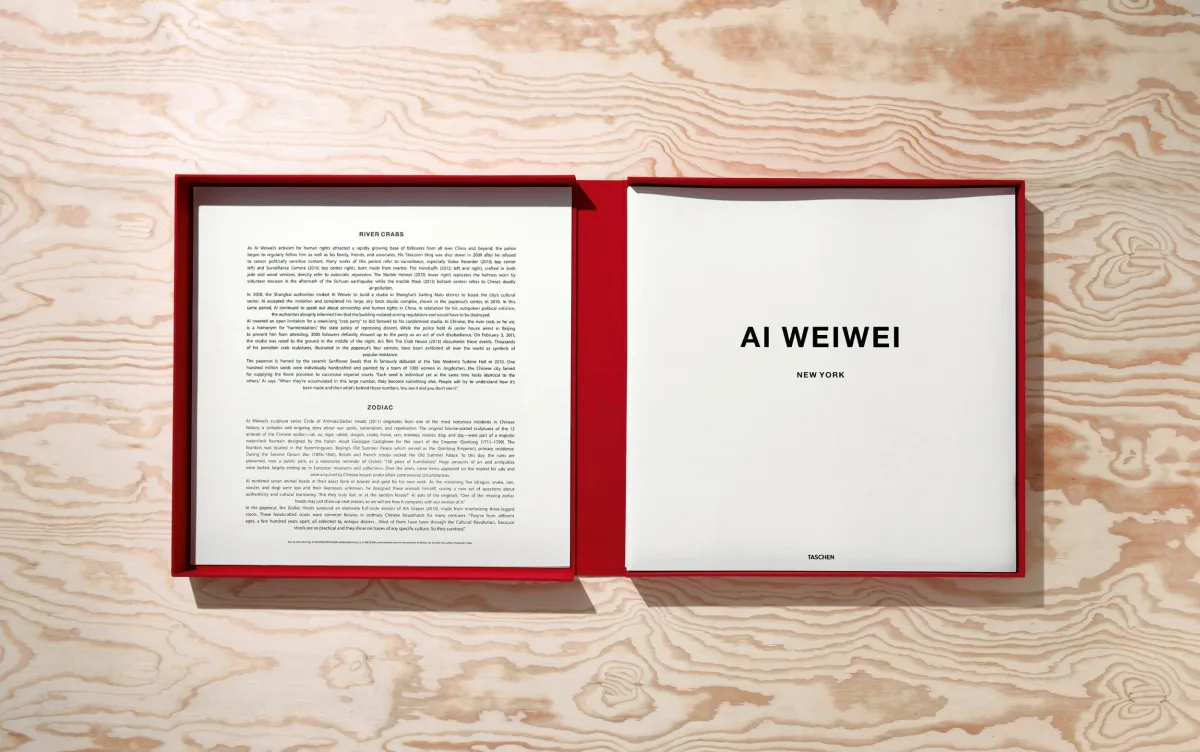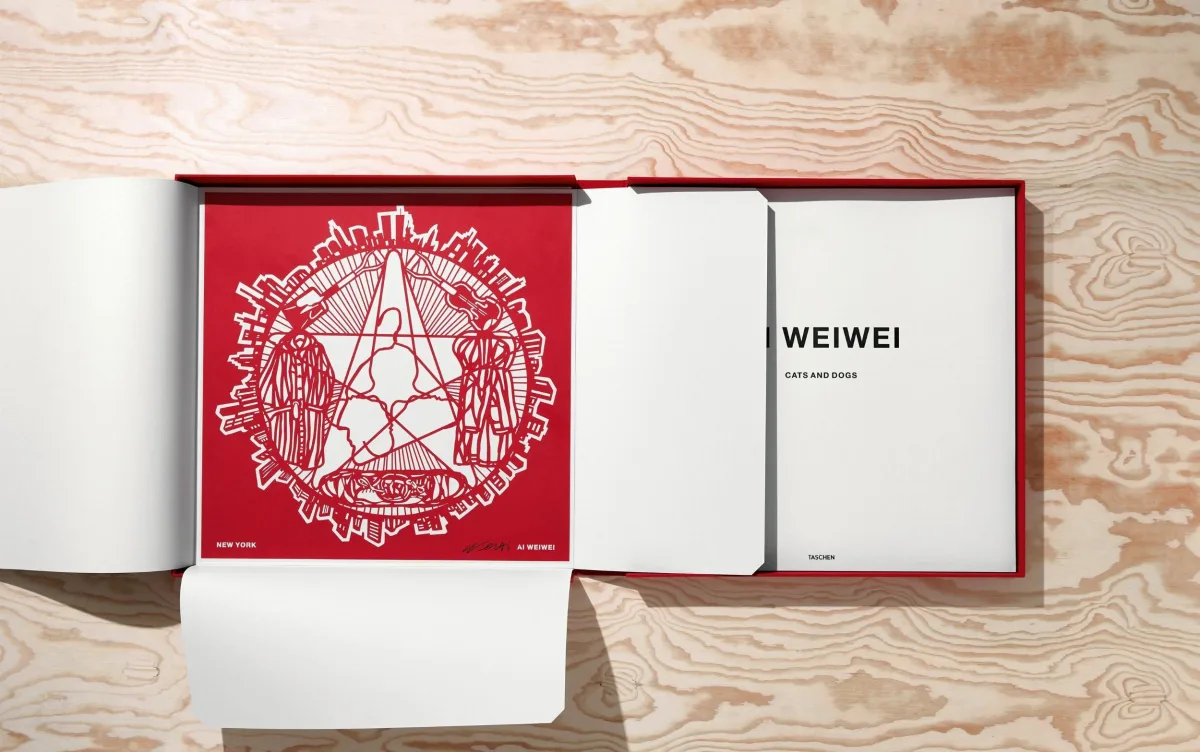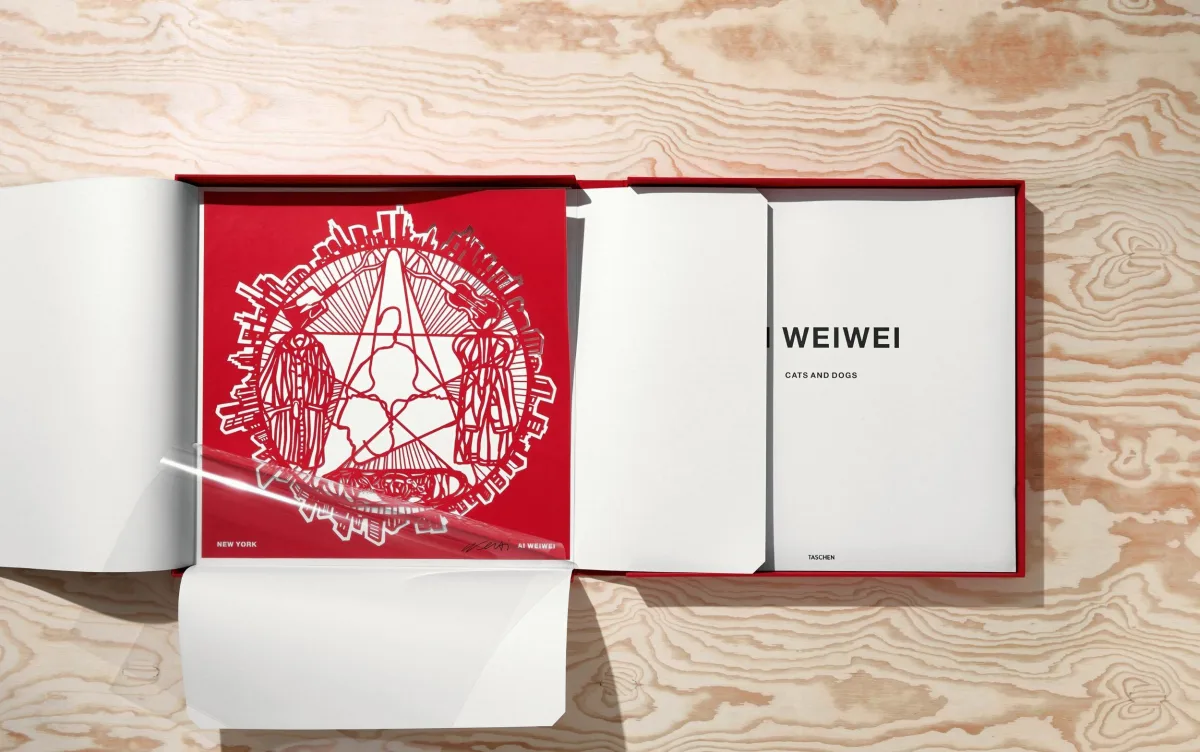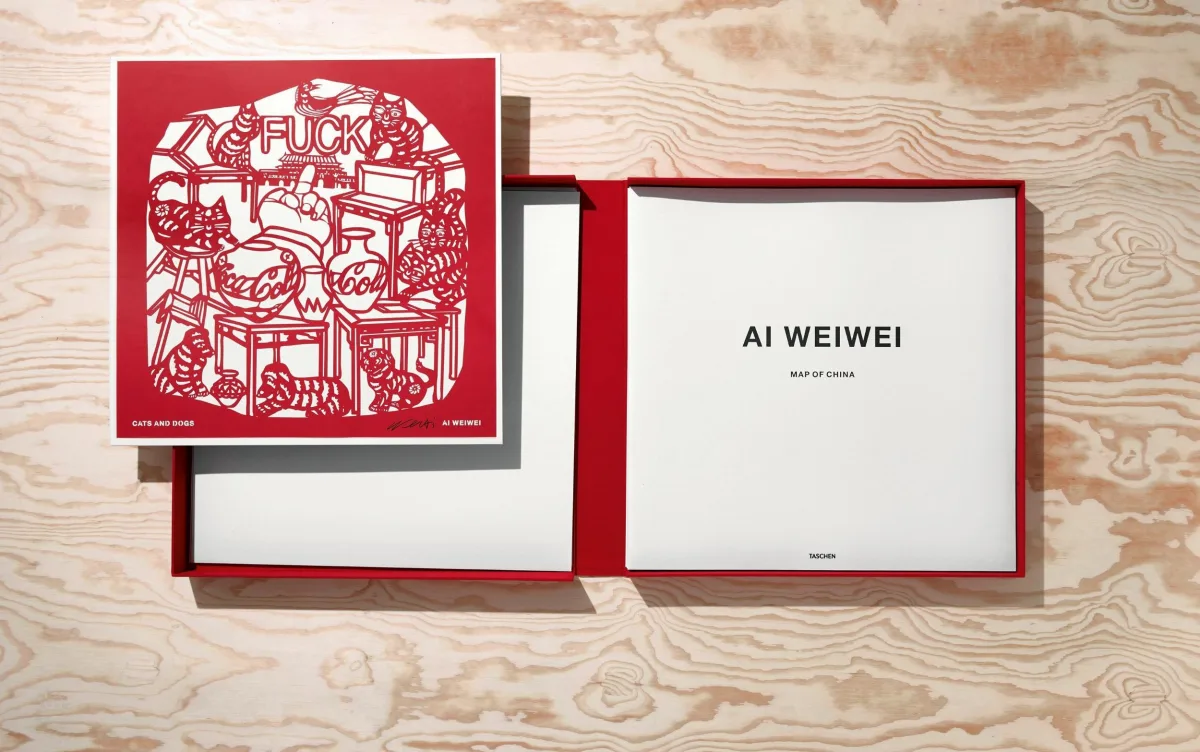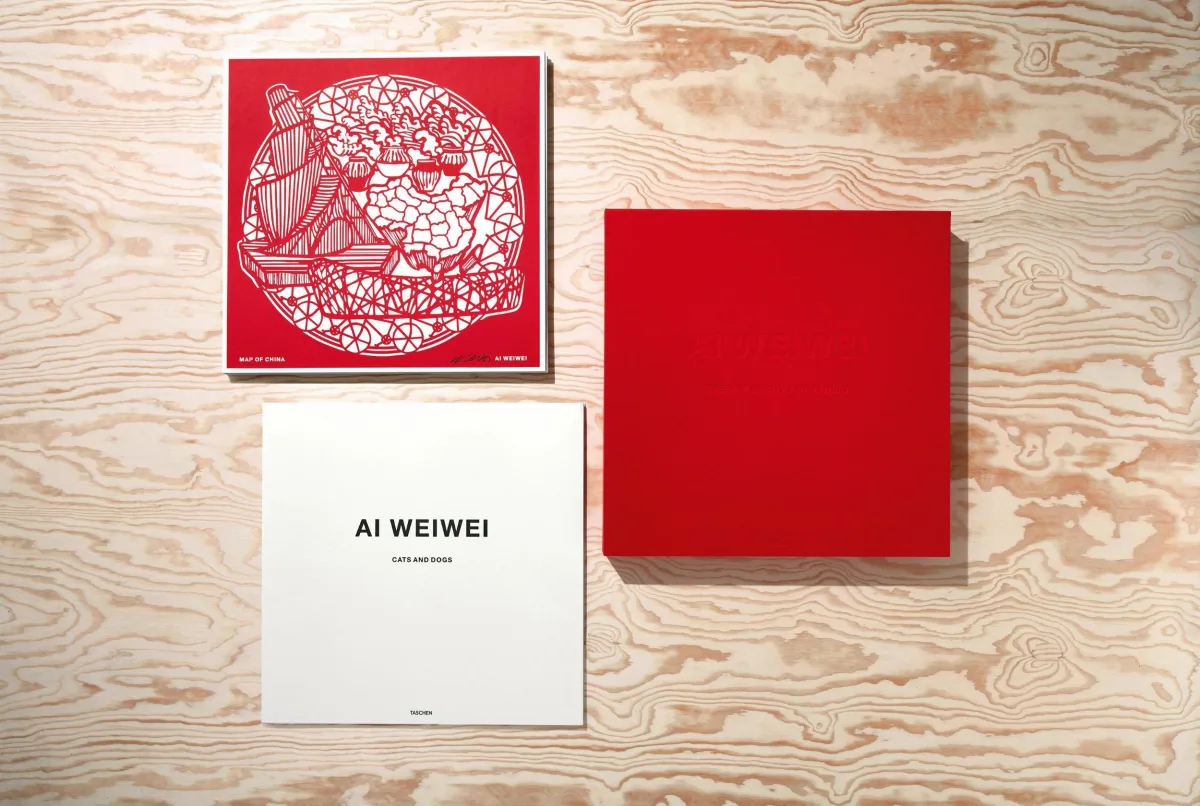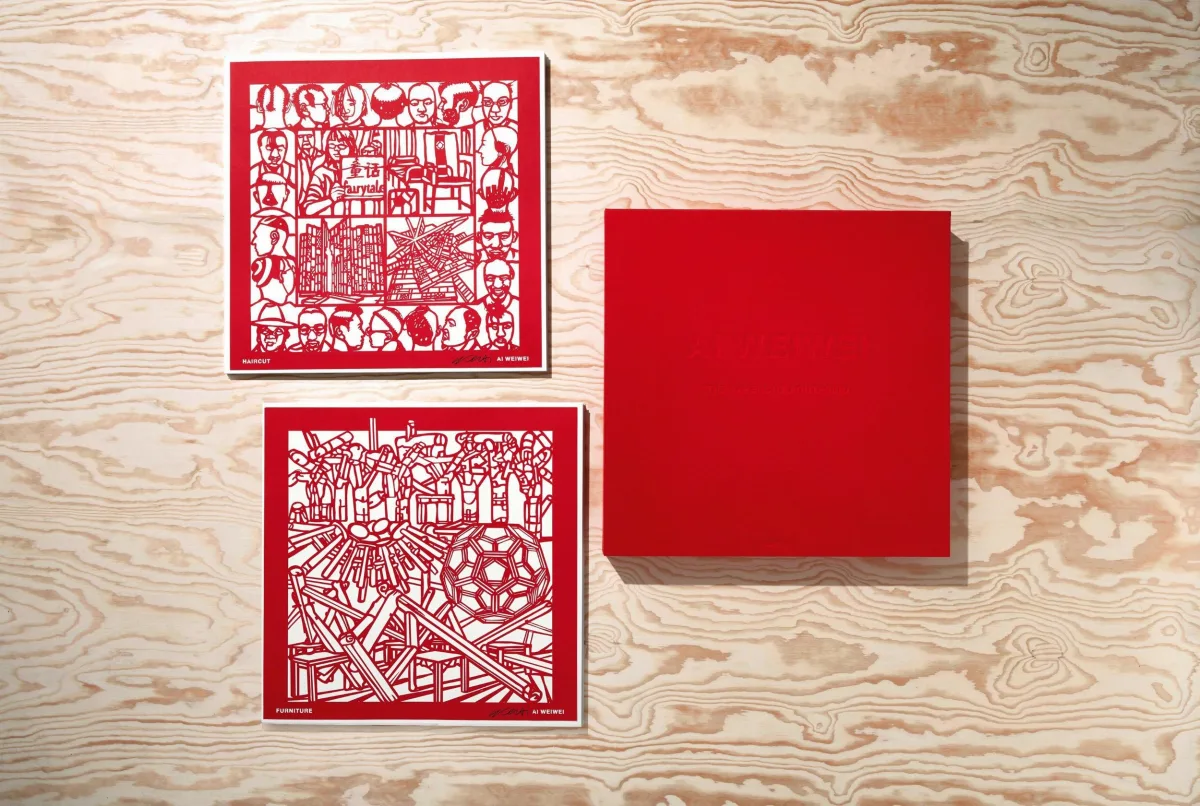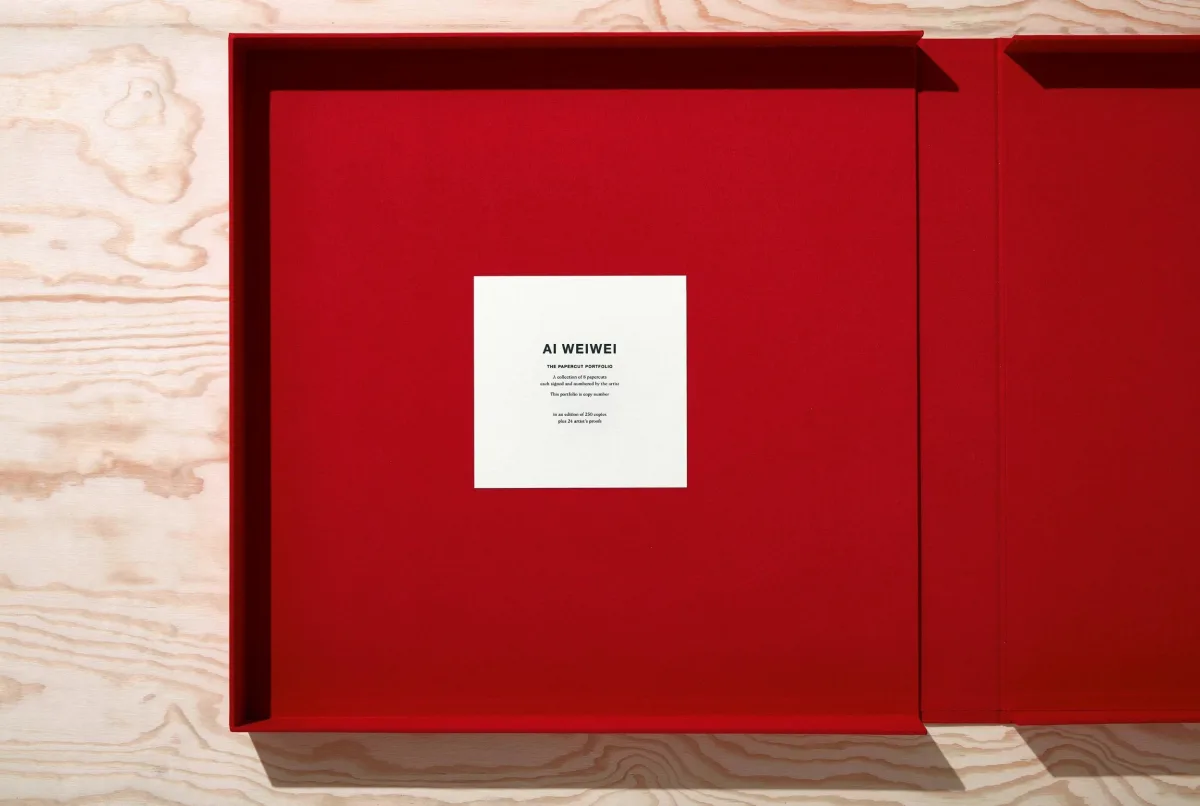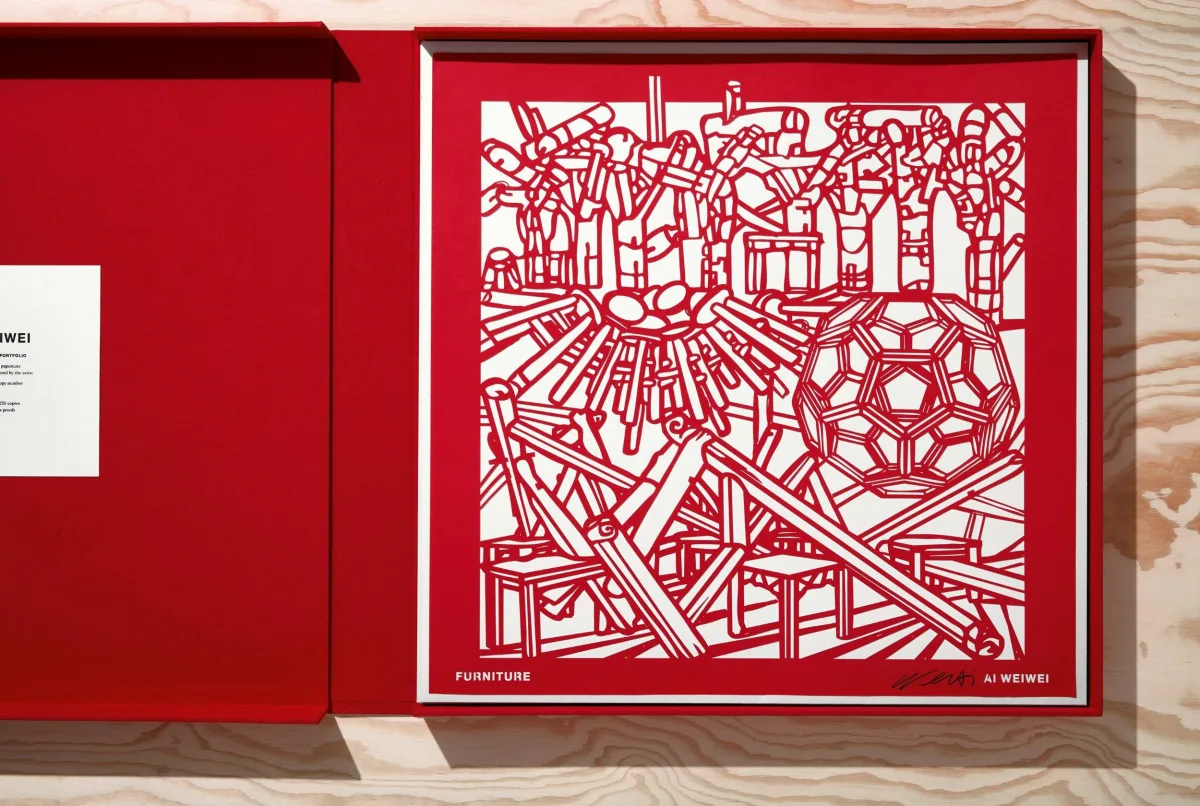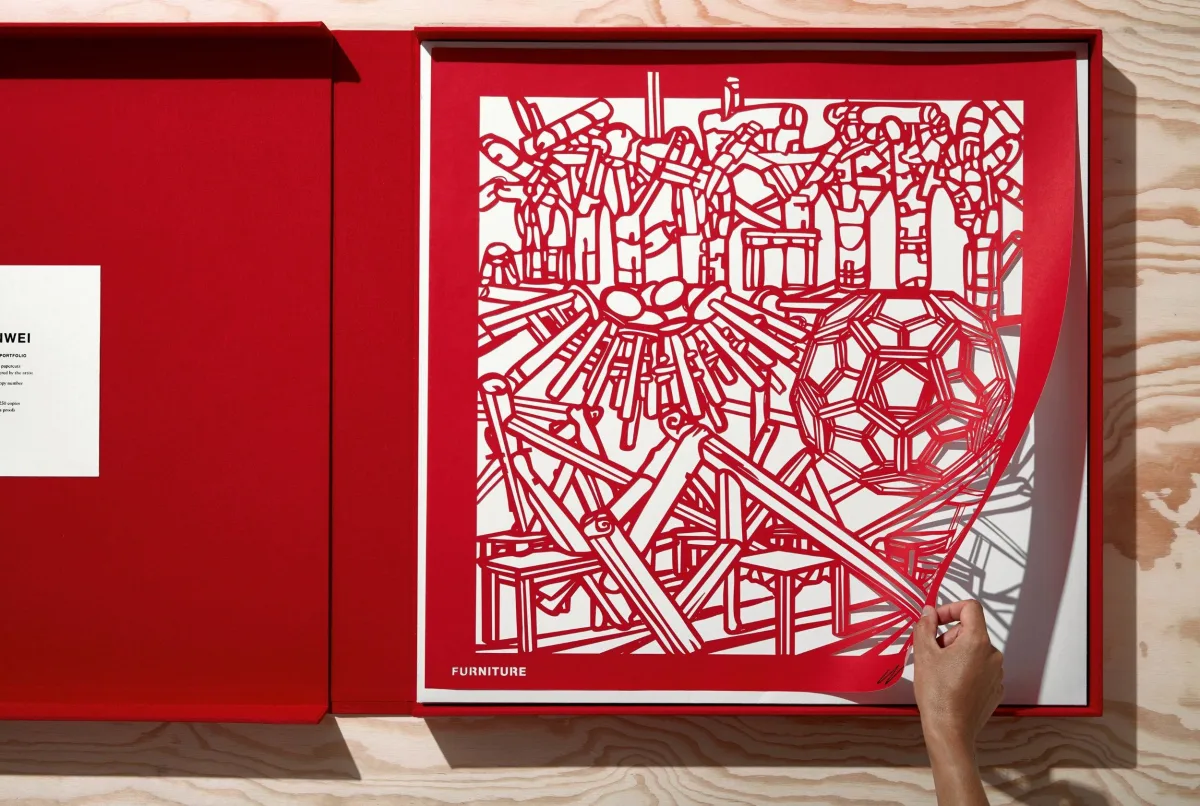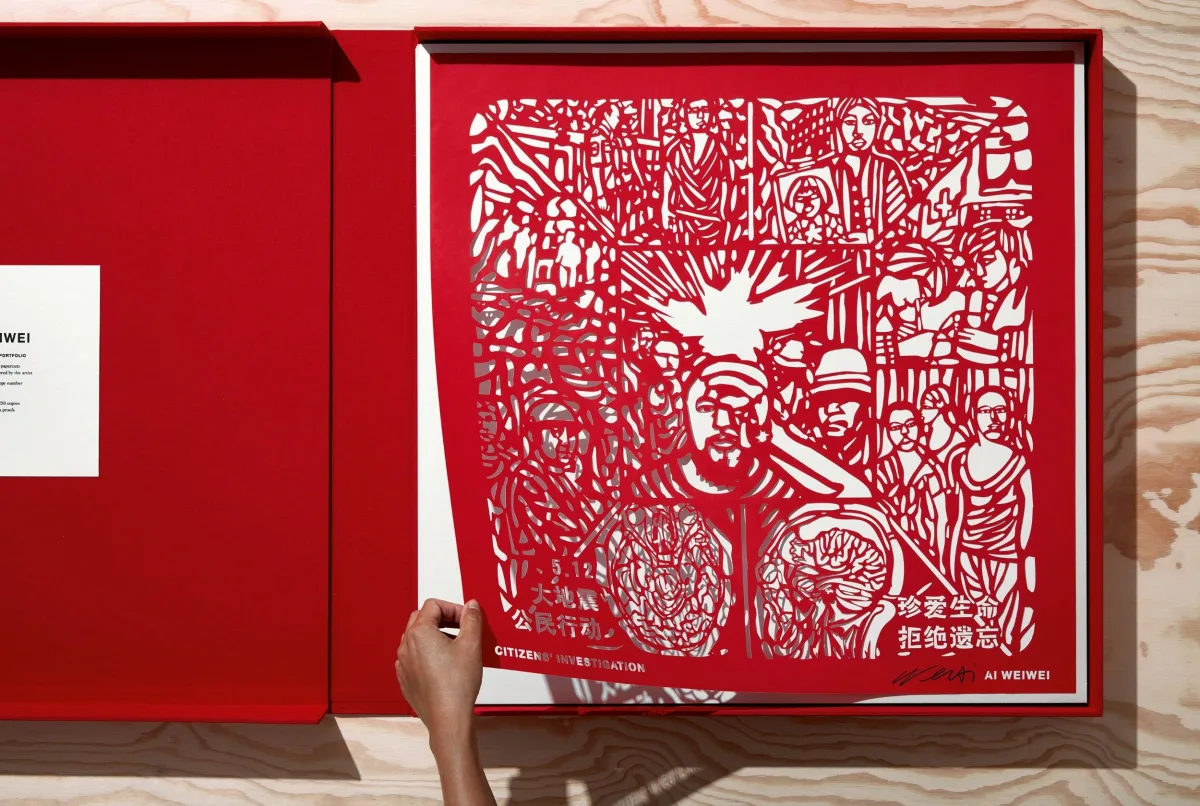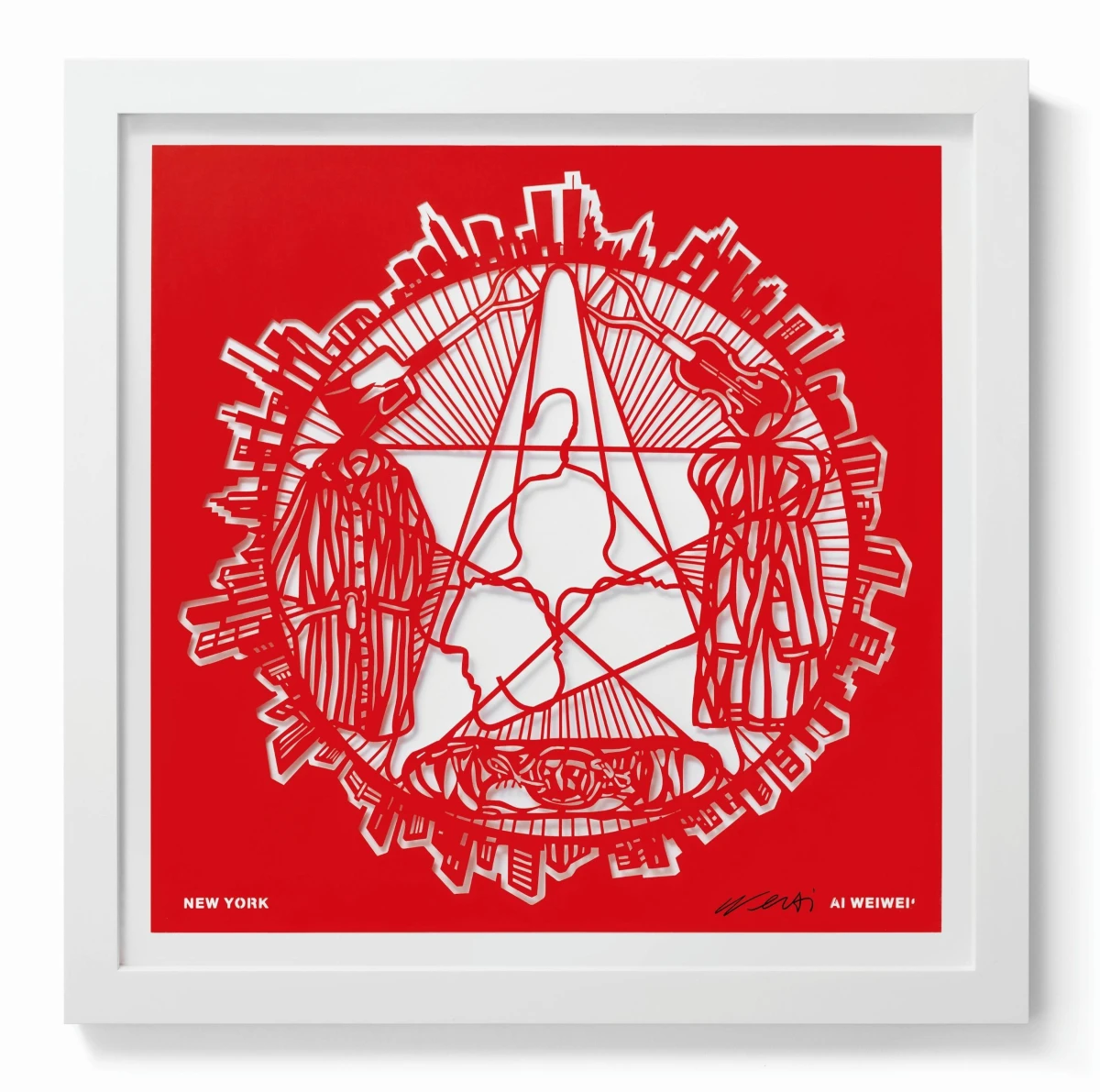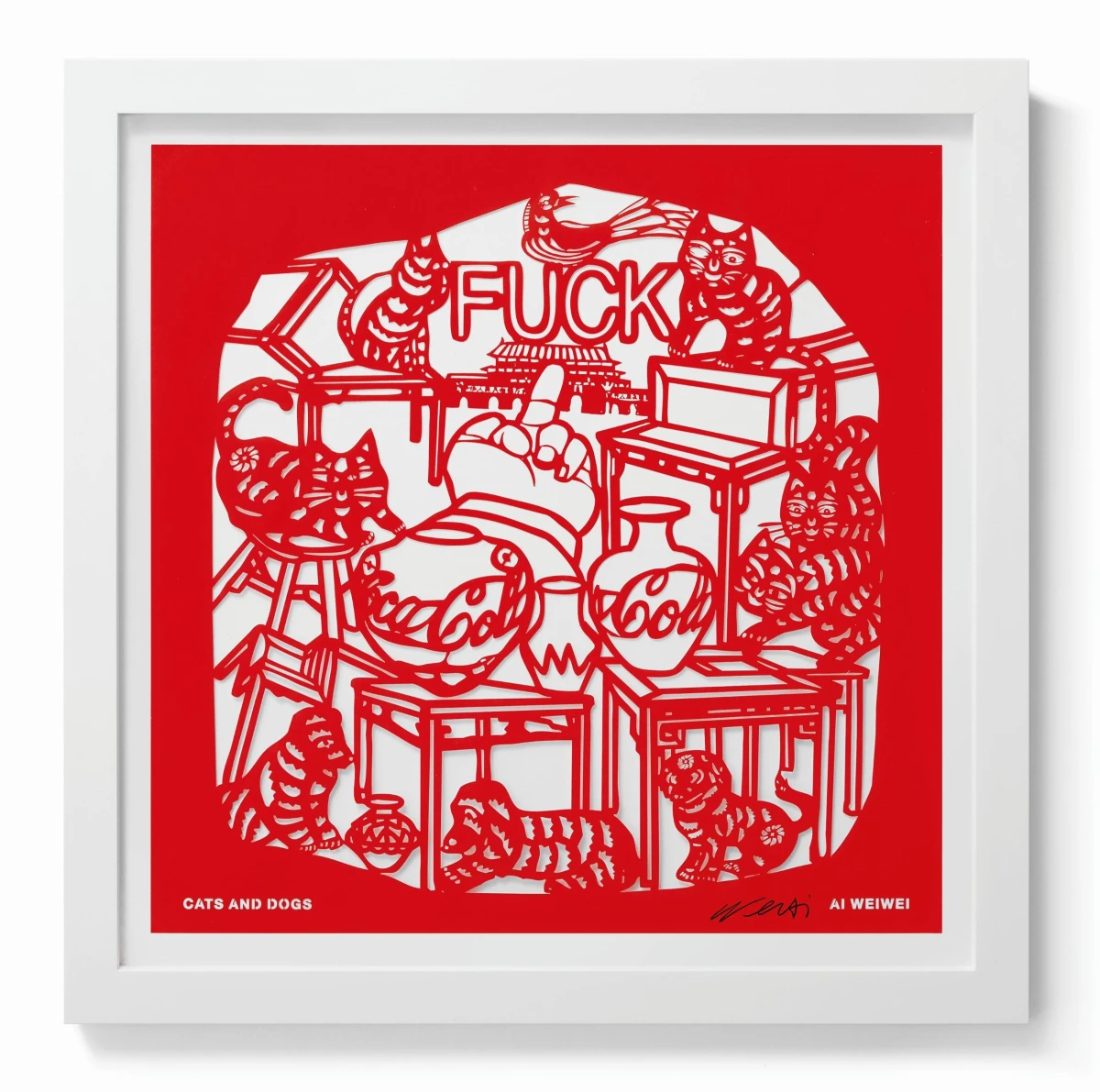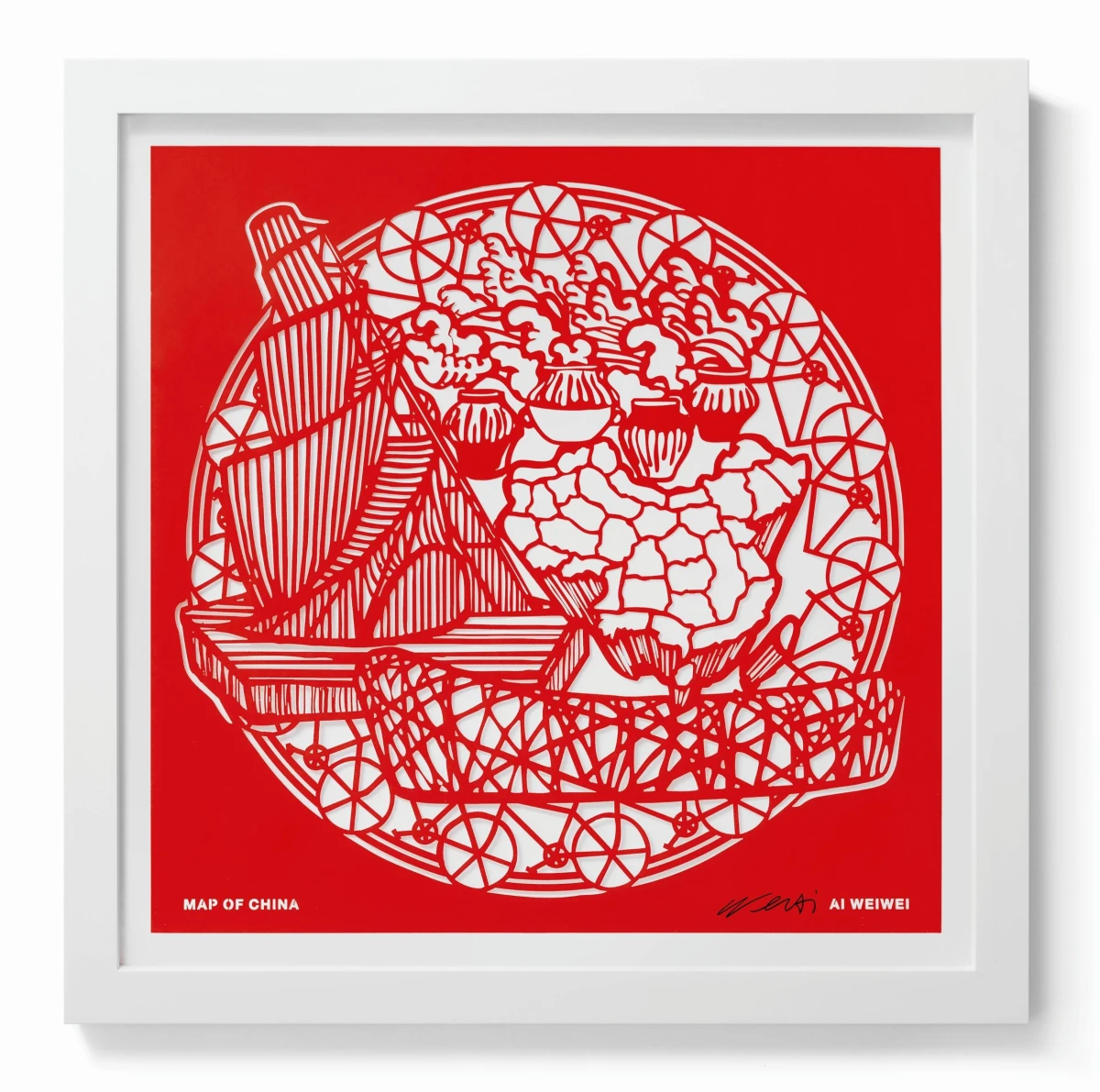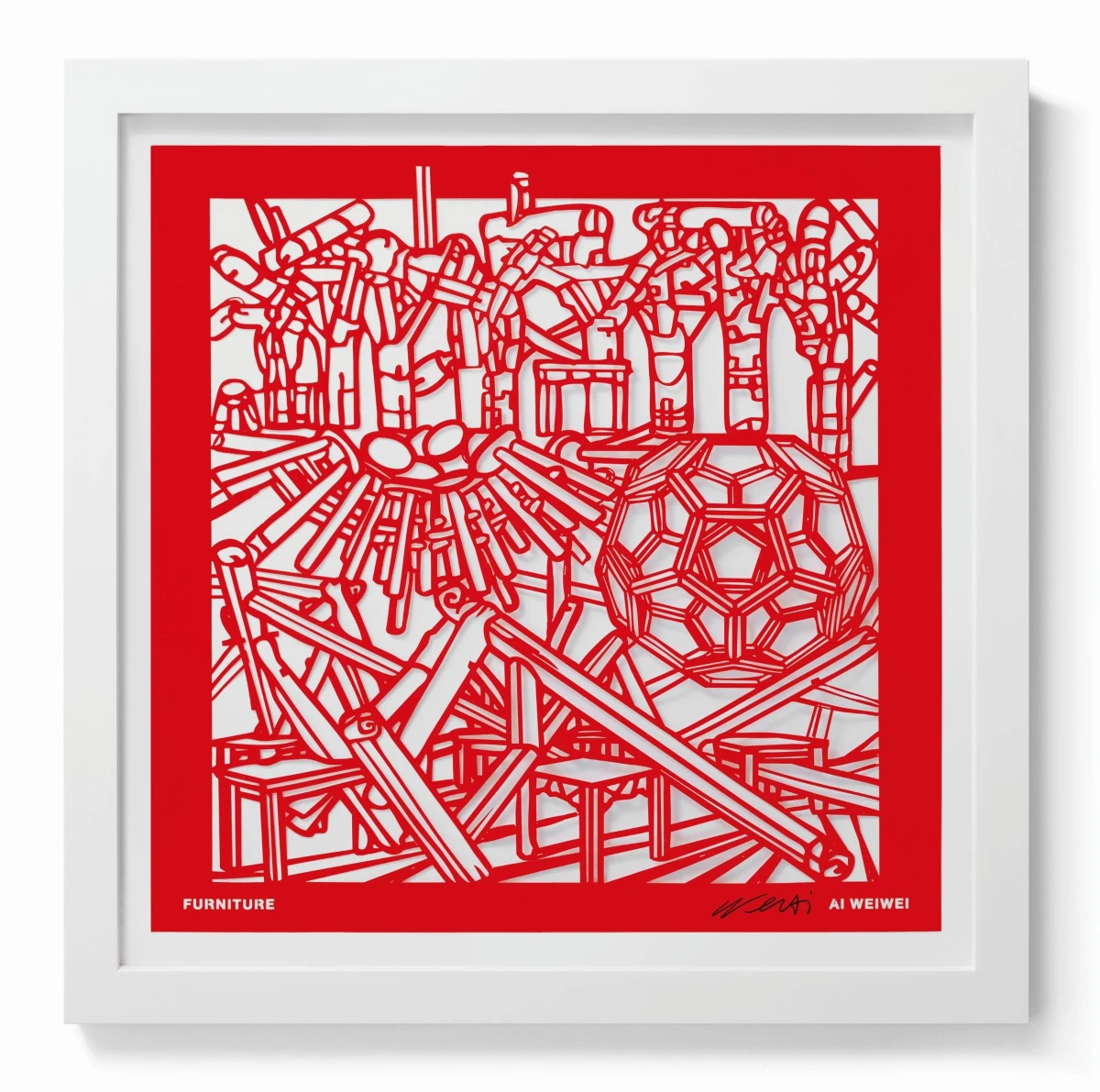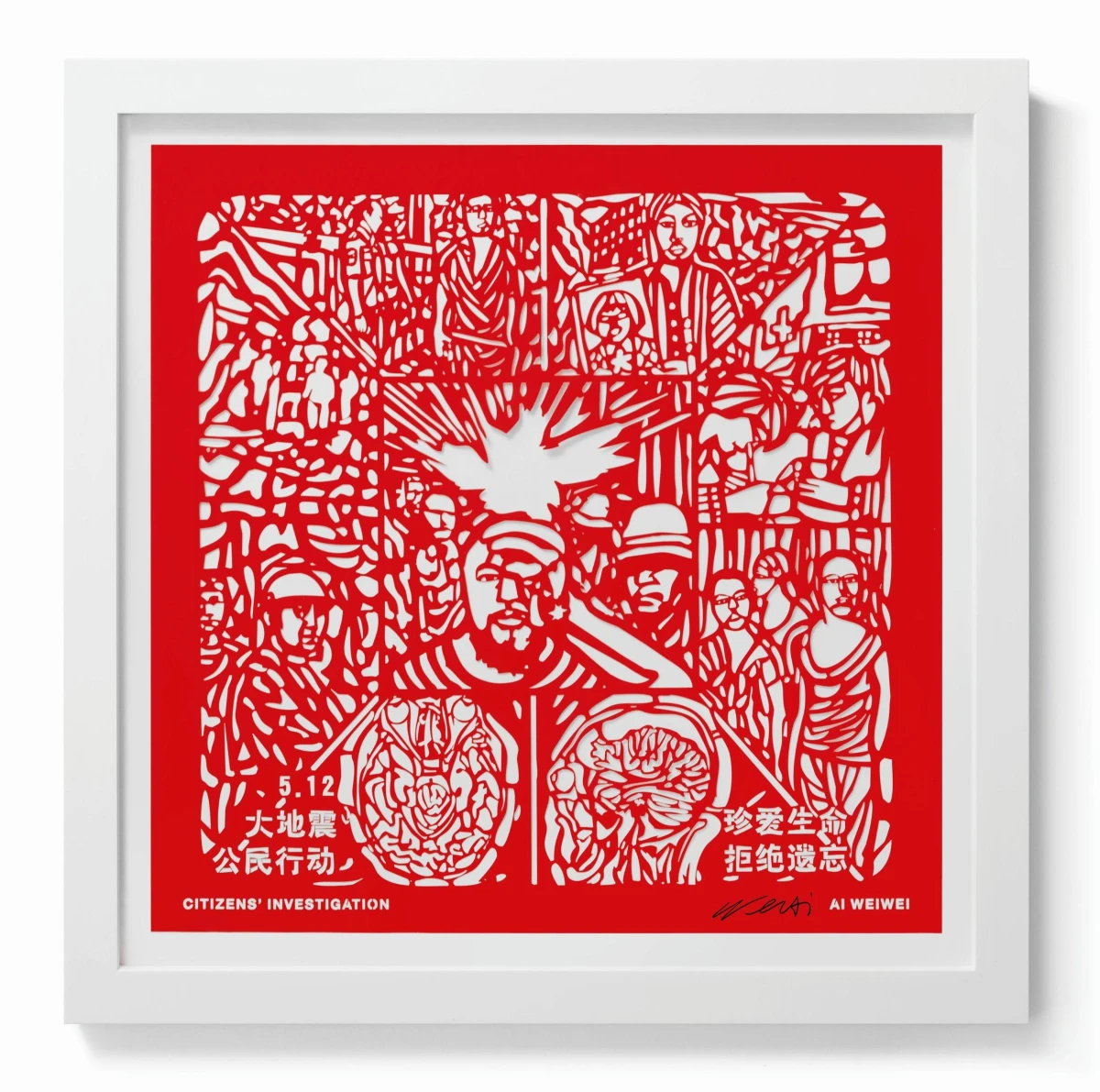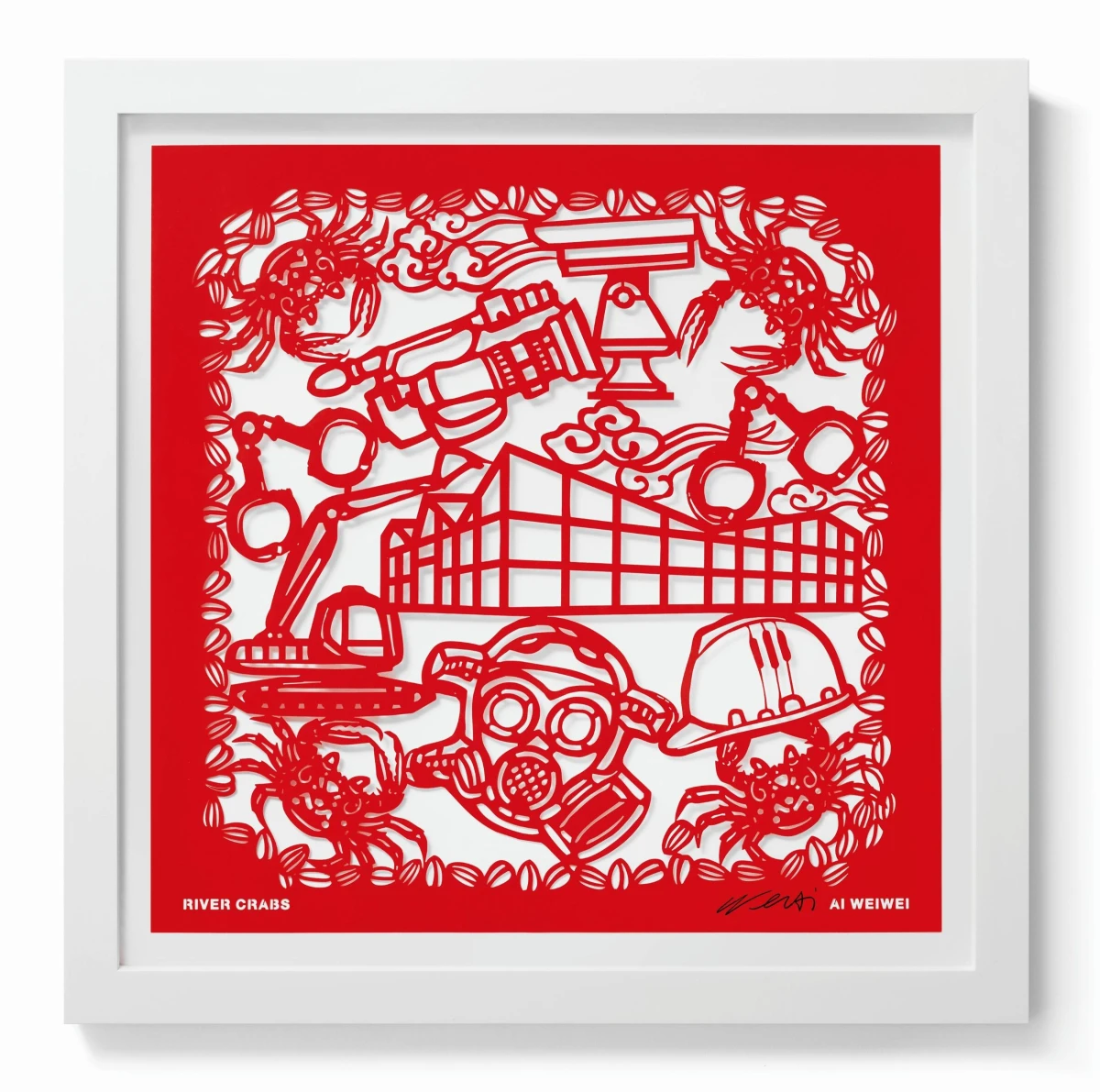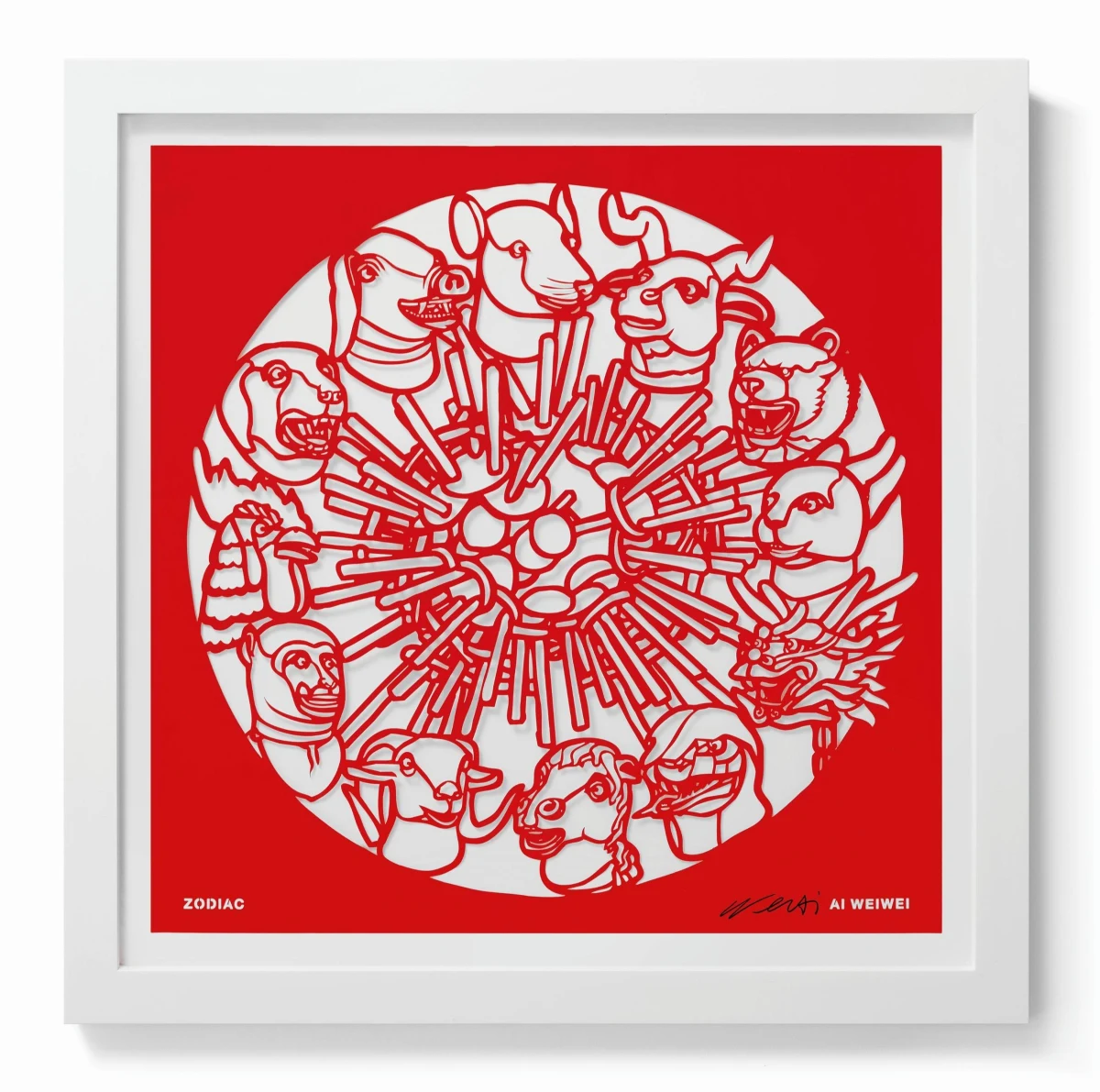Ai Weiwei. The Papercut Portfolio
40000This edition is sold out. However, occasionally, copies do become available again. Please register on our waiting list so we can inform you if this edition, or anything similar comes up.
Collector’s Edition of 250 copies. The portfolio presents eight papercuts, each signed by Ai Weiwei and accompanied by explanatory notes.

Ai Weiwei. The Papercut Portfolio
40000The Ai Weiwei Papercuts
A limited-edition portfolio reflecting on his oeuvre
In this limited-edition portfolio created exclusively for TASCHEN, Ai Weiwei employs the medium to reflect on his life and work in eight papercuts. Meticulously cut in large-format, colored fine-art paper, each papercut is signed by the artist and comes with explanatory notes by Chin-Chin Yap, who has extensively worked with Ai Weiwei, most recently as a writer and co-producer on several films. Through these eight pieces, Ai offers a beautiful, personal retrospective in a unique format.
Collector’s Edition of 250 copies. The portfolio presents eight papercuts, each signed by Ai Weiwei.
The Papercuts:
New York
During his time in the New York from 1982 to 1993, Ai developed from a painter into an artist transforming found objects into surreal sculptures. He had been part of the seminal Stars group of painters in Beijing, but in New York, he broadened his practice, taking up photography and making sculptures that reshaped or alienated found objects. Encircled by a bordure of the Manhattan skyline, this papercut features some of Ai’s early works from the time, including Three Clothes Hangers as a Star (1983) and Safe Sex (1986), a raincoat perforated by the artist with a ring and a condom, “because around that time everybody was so scared about AIDS.”
Cats and Dogs
This motif contemplates a decisive period in Ai’s work, from his return to Beijing in 1993 after a decade-long stay in New York to building his Caochangdi home and studio on the Beijing outskirts in 1999. He gives the finger to the Forbidden City, just as he did in his Studies of Perspective, where his outstretched middle finger measured sights around the world. The word “FUCK” is another familiar trope of Ai’s Beijing years, one he spelled as a huge neon sign in his studio garden. Neolithic vases branded with the Coca-Cola logo, alluding to his landmark Han Dynasty vase piece, rest on Ming and Qing Dynasty tables. The works are depicted in this papercut as they would be displayed at the studio, surrounded by animals, including the dogs and countless cats who freely roam the house and garden.
Map of China
Ai here introduces his wood sculpture of a map of China, his work with bicycles and chandeliers, neolithic vases dunked into bright industrial paints, and the Beijing Olympic Stadium he co-designed for the 2008 Games with Swiss architects Herzog & de Meuron. On the left we see Fountain of Light (2007), a steel and crystal sculpture based on Vladimir Tatlin’s Monument to the Third International, a monument “made of steel, glass, and revolution,” while also referring to the chandeliers that proliferated in Chinese hotels and banquet halls as symbols of excess and luxury during China’s heady period of economic progress. Map of China (2003), at the center right, was created from the salvaged wood of an old temple slated for demolition. The contours within resemble provincial outlines, but their logic is merely practical: “People often ask me if there is a political condition represented here,” Ai says, “but the major problem was to resolve how to hold together 100 pieces tightly and precisely. The map is just the shape of it.”
Furniture
Antique wood is one of Ai Weiwei’s signature materials. As in many of Ai’s works, his repurposing of traditional objects into new, surreal forms destroys their original function but also confers a new identity on them. Fragments is constructed from ironwood Qing Dynasty beams, pillars, chairs, and tables, joined together in the traditional manner. “None of the pieces have any rational need to be connected to one another,” Ai points out, but viewed from above “each one is precisely joined to the next to resemble a map of China.” Through (2007–2008) is another massive wooden installation formed of Ming and Qing Dynasty tables and temple beams clashing against or piercing through each other. “And when it clashes, or when it’s built together,” Ai says, “it’s like a fine-designed disaster or ruin.” We also find a complex later edition of Ai’s grape-like conglomerations of joined wooden stools and a polygonal construction, Divina Proportione, referencing a sketch of the divine proportions by Leonardo da Vinci from around 1500.
Haircut
Ai reflects on his work for the 2007 documenta in Kassel, where he afforded a journey to the German city to 1,001 Chinese compatriots who had never left their country before. Selecting people from every walk of life, Ai designed their clothes, suitcases, and—as depicted in this papercut—also cut their hair. The participants were free to do as they wished as long as they did not leave the city, acting both as spectators and part of an artwork. Also featured is the monumental outdoors installation Template, constructed from Ming and Qing Dynasty wooden doors and windows salvaged from demolished buildings, which collapsed in a thunderstorm. “It was not prepared for the German weather and wind,” Ai commented. “When I saw how the site had collapsed—not totally, it turned into some other shape—I thought it is now really like a ruin. It comes from ruins and now it’s really a ruin.”
Citizens’ Investigation
On May 12, 2008, a 7.9 earthquake struck China’s Sichuan Province. Its deathtoll reached almost 70,000, among them many schoolchildren. The papercut shows people amid the rubble: a woman holding up a picture of her missing child, helpers and investigators trying to find victims and survivors. As the Chinese government withheld information on the identities of the victims, Ai organized a team of volunteers to investigate and compile a list of the deceased children, a project known as the “Citizens’ Investigation.” It was found that due to corruption, many schools had violated official safety standards, contributing to the catastrophic deathtoll. In 2009, as he faced government retaliation for his investigation, Ai went to testify as a witness for Tan Zuoren, an activist and writer also investigating corruption issues around the earthquake. The night before the trial, Ai and his colleagues were assaulted in their hotel rooms. The image in the center is based on a photograph that Ai took of his colleagues and himself in the elevator after the assault. Ai suffered a brain hemorrhage, documented in the CAT scans at the bottom of the composition.
River Crabs
We encounter the tools for an increased level of state surveillance the artist was under, and the story of the studio Ai was invited to build by the the Shanghai authorities in 2008, which was then razed by the authorities in 2011 as a reaction to his political commitment. After the authorities informed Ai that the studio would have to be demolished, he sent an open invitation for a week-long “crab party” at the condemned building, which was attended by 3,000 followers, turning the party into a major event of civil disobedience. The word for river crabs, He Xie, is a homonym for “harmonization,” or the state policy of repressing dissent, and Ai created small sculptures of the crabs in porcelain. The studio was razed to the ground in the middle of the night on February 3, 2011. The composition is framed by the porcelain Sunflower Seeds individually manufactured by Ai, which most famously covered the floor at the Tate’s Turbine Hall in London in 2010.
Zodiac
This papercut offers a new interpretation of an iconic treasure looted from Beijing’s Old Summer Palace by Western powers during the Second Opium War in 1860. Designed by the Italian Jesuit Giuseppe Castiglione for the court of the Emperor Qianlong (1711–1799), the zodiac water-clock fountain is fabled for its precious bronze-plated sculptures of the twelve animals of the Chinese zodiac. It was dissembled when British and French troops sacked the palace, leaving behind ruins that are preserved in a public park to this day. Of the animal heads, seven still exist, mostly in Western collections, and have been rendered by Ai in their exact form. Five were lost (dragon, snake, ram, rooster, and dog), so he designed these animals himself, raising new questions about authenticity and cultural appropriation. “Are they truly lost, or at the auction house?” Ai asks of the originals. “The missing zodiac heads may just show up next season, so we will see how they compare with our version.”
The artist
Born in Beijing in 1957, Ai Weiwei is renowned for making strong aesthetic statements that resonate across today’s geopolitical world. From architecture to sculpture and installations, social media to documentaries, he uses a wide range of media for new ways of artistically examining society and its values. He is the recipient of the 2015 Ambassador of Conscience Award from Amnesty International and the 2012 Václav Havel Prize for Creative Dissent from the Human Rights Foundation. Ai’s first feature-length documentary Human Flow premiered at the 74th Venice Film Festival in competition. He currently lives and works in Cambridge, Berlin, and Montemor-o-Novo, Portugal.
Ai Weiwei. The Papercut Portfolio
Edition of 250Portfolio of eight papercuts, each signed by Ai Weiwei, 60 x 60 cm, in clothbound clamshell boxISBN 978-3-8365-7049-7
No reviews have been posted for this item yet. Be the first to rate this product.

